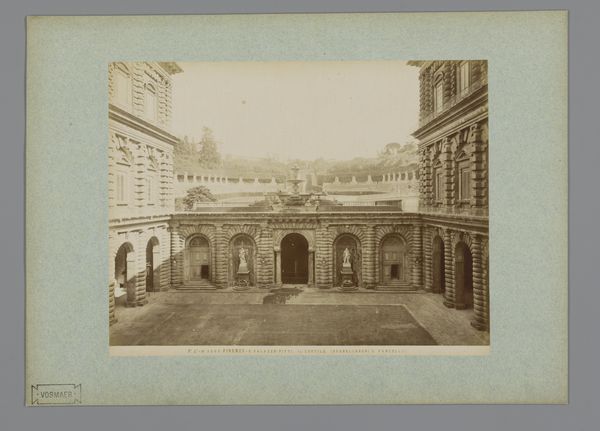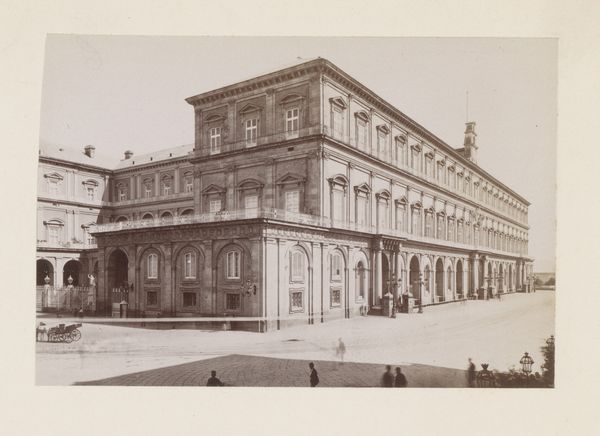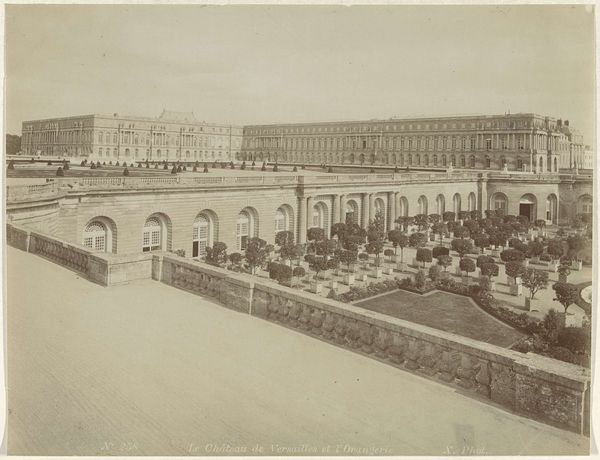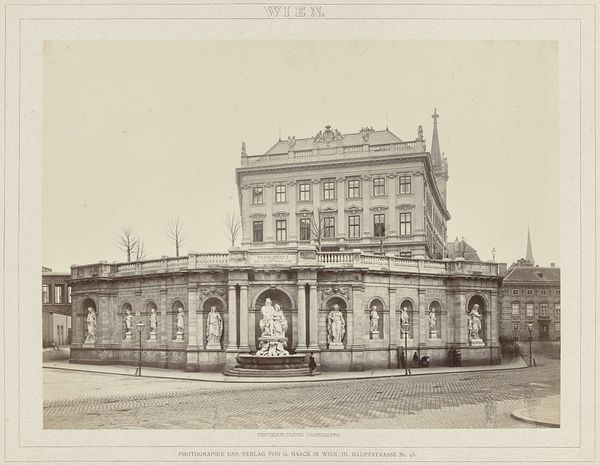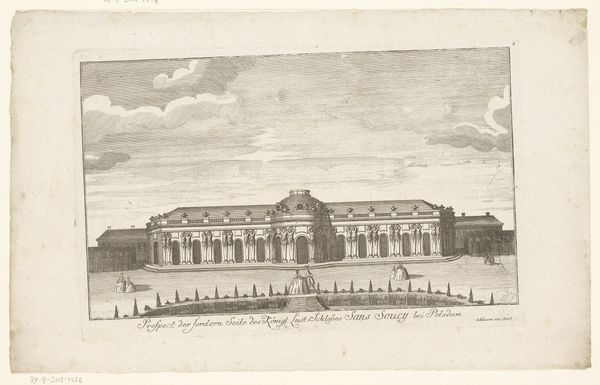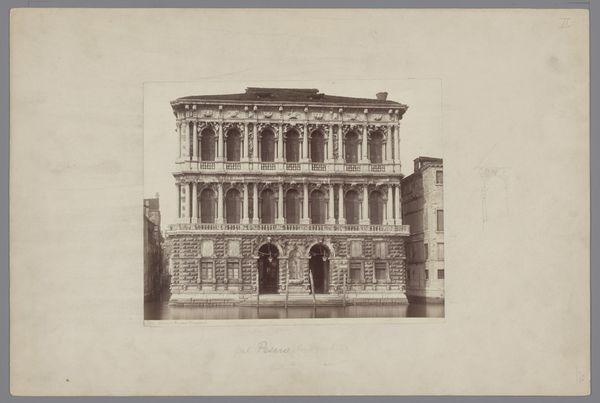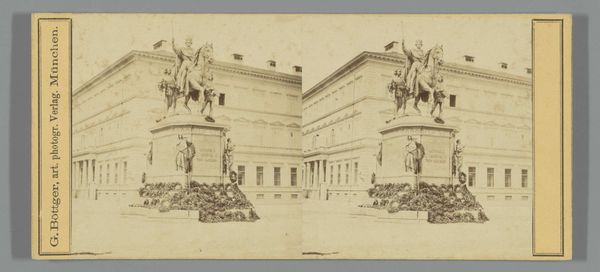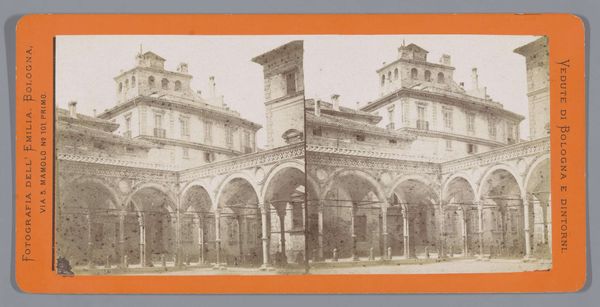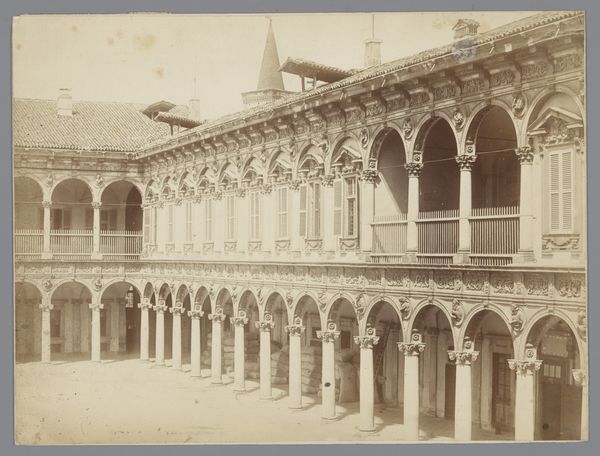
Gezicht op het atrium van het kartuizerklooster San Martino in Napels c. 1860 - 1880
0:00
0:00
giorgiosommer
Rijksmuseum
Dimensions: height 82 mm, width 173 mm
Copyright: Rijks Museum: Open Domain
Curator: Here we have a gelatin silver print by Giorgio Sommer, taken sometime between 1860 and 1880. It’s titled "Gezicht op het atrium van het kartuizerklooster San Martino in Napels" which translates to "View of the atrium of the San Martino Charterhouse in Naples." Editor: It's immediately striking – the geometric precision and that imposing, almost oppressive architectural massing. It feels like a stage, doesn't it? An empty stage waiting for actors. Curator: Sommer’s composition definitely leans into neoclassical principles. Note how the architecture dominates the frame, asserting a rigid, ordered world through its repetitive arcades. It suggests a very particular socio-political order too. Editor: Absolutely. I’m drawn to thinking about the materiality of it. That stone! What quarries yielded it? What was the labour required to shape, transport, and assemble it with such imposing uniformity? The labour required would have shaped everything from the individual stones, to the cultural symbolism. Curator: It's interesting to consider that interplay. Sommer uses photography—a relatively new medium then—to capture this very established, historically dense space. This specific printing process offers sharp lines and gradations of tone to reveal subtle differences in texture and light. This enhances the imposing geometric clarity of the monastery. Editor: And think about photography itself! The chemistry, the light-sensitive materials, the processes used to make copies…these were also new methods of manufacture, ways of mass-producing images, and creating accessible representations of places that may not have been readily accessible. The print brings what would have been, in the 1800s, a very exotic location, available to others across Europe to collect and reflect on. Curator: That is insightful. The controlled composition of Sommer’s photograph, combined with the monumentality of the architecture, seems to evoke notions of power, knowledge, and the dominance of institutions. Editor: I agree. Thinking about what isn’t depicted, who is absent... that silence resonates too. To me, the work functions almost as an index, representing labour, material sources, and modes of production that were all critical to produce the architectural achievement presented here. Curator: It’s a compelling piece that showcases both the orderliness of Neoclassical architecture and the emergence of photographic techniques during that time. Editor: Definitely, considering this through a materials lens opens up even more historical, social and symbolic readings.
Comments
No comments
Be the first to comment and join the conversation on the ultimate creative platform.
